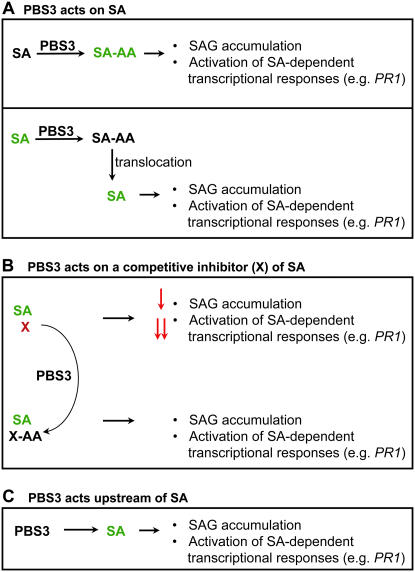Figure 6.
Proposed biochemical functions of PBS3. These models assume PBS3 activity results in conjugation of an amino acid to a small molecule (such as a phytohormone), similar to characterized GH3 family members. A, PBS3 acts directly on SA to form an SA-amino acid conjugate. In this case, SA-amino acid itself may be the active form of SA required for SAG accumulation and induction of PR1 expression (top). Alternatively, the formation of SA-amino acid may be required for a subsequent conversion to an unknown active form of SA. In the bottom panel, the formation of an SA-amino acid conjugate is required for the proper spatial localization of SA. The SA-amino acid conjugate is translocated and then hydrolyzed to release SA, resulting in SAG accumulation and PR1 induction. B, PBS3 acts on a competitive inhibitor (X) of SA to inactivate it by forming X-amino acid, resulting in full SAG accumulation and activation of SA-dependent transcriptional responses. The differential impact of X on SAG accumulation versus PR1 expression could be explained by different binding affinities of the inhibitor for distinct enzymes controlling these processes. C, PBS3 acts upstream of SA either in a regulatory capacity or as a precursor of SA. In this case, net SA biosynthesis is reduced, resulting in reduced SAG accumulation and PR1 expression. Activators of SAG accumulation and PR1 expression are shown in green, whereas inhibitors are shown in red.

